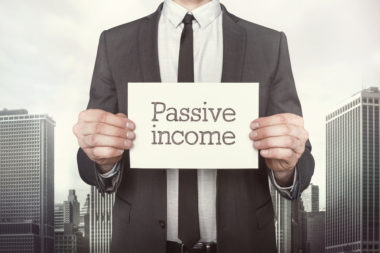The stock market can seem extremely volatile at times. News of exciting, upcoming products can cause the stock valuation to skyrocket, while PR scandals and poor reviews can cause it to nosedive. Additionally, speculation and insider information can cause massive shifts in the market seemingly out of nowhere
This chaos has inspired some investors to experiment with new paradigms, and one of these is the concept of value investing. Value investors are more interested in cutting through the noise and playing the long game. They assess opportunities based on the long-term performance of companies, then purchase undervalued stock at a deflated price in order to turn massive profits.
In the 1920s, finance professors Benjamin Graham and David Dodd developed this methodology in their book “Security Analysis.” This text provided the first modern system to rationally assess investment opportunities, enabling investors to determine the “true value” of stock.
Note that determining the true value of an investment is no simple task, and it won’t typically result in quick wins, instead requiring patience and research. Let’s break down the concept of value investing — by the end of this article, you’ll see the benefits it can bring to an investment portfolio.
Table of Contents
How to Value Stocks
There are several common value investment strategies for evaluating stocks. These are often used in conjunction with one another to determine the worth or forecast the trajectory of a company. They can also help investors calculate potential return on investment (ROI) or the risk involved with specific stocks.
Price-to-Earnings Ratio
How can you determine if a stock is a reasonable investment? Take a look at its price-to-earnings ratio (P/E ratio). The P/E ratio, sometimes referred to as the earnings or price multiple, measures how many times the earnings per share has been covered by the current market. A lower ratio signals a better investment.
This ratio can be used to compare the worth of a share to others. The P/E ratio is the amount you’d have to spend to earn back $1 in company earnings. So, if this ratio is 17.3 (the overall post-WWII average), you’d have to spend $17.30 to earn $1 in company earnings.
Dividend Yield
If a company is able to pay dividends, they are in good financial standing. A higher dividend demonstrates even greater stability and more ROI. You can calculate the dividend yield of a stock by dividing the company’s annual dividend by the stock’s share price. A high ratio indicates that you can expect to receive larger dividends from that investment.
However, be wary of ratios that seem too good to be true; an excessively high dividend yield could be the result of a dropping stock price, which could indicate that the company may stop paying dividends soon. It could also be a sign that the company is not investing enough to ensure continued growth (as they are paying out money in dividends instead of reinvesting it).
Asset Valuation
How much are the assets of a company worth? What is a company’s intrinsic value? Simply put, this is what asset valuation seeks to figure out. Assets include investments, property, and equipment. The market worth of brands and trademarks are also included. Then, the company’s liabilities (debts, operating costs, tax costs, and so on) are deducted from this figure. The resulting number is the asset valuation of the business.
While it may be reductive to focus solely on this approach when evaluating a stock, asset valuation is an important factor to consider in conjunction with other approaches. If the cost of a share declines below what its market value should be in proportion to the company’s assets, it is considered a safe investment (barring extraordinary circumstances).
Margin of Safety
When the asset valuation of a business reveals that its intrinsic value is greater than its market value, investors are more likely to buy shares. However, the exact price target at which investors are willing to pull the trigger on an opportunity can differ. A margin of safety is a personally determined threshold an individual may use to decide when they are comfortable making an investment.
Each investor defines their own margin of safety. For promising stocks, that number might be 1.2 times its book value. For more cautious investors, that number might be the intrinsic value of the company — or even lower. The amount of risk you’re willing to take will determine this ratio.
Benefits of Value-Based Investing
In theory, when the market value of a stock declines to a point below its true value (determined using the value investment strategies above), it could make for a lucrative investment. This is at the heart of how value investing works, and it carries many benefits.
While those who practice value investing are unlikely to get rich quick, they are able to make safe decisions by defining the level of risk they’re willing to incur, then making measured investments accordingly. While knowing how to value stocks — researching and evaluating each opportunity — is a time-intensive process, it is an essential part of value investing.
Keep in mind that value investing is more art than science. In addition to solid research, you’ll need strong intuition and decision-making skills to succeed as a value investor. Each investor has their own methods for determining the intrinsic value of a company, and each has their own desired level of risk.
If you don’t have experience, a financial advisor can help you determine these values and manage your investments in the stock market. With experience, you can refine your skills to become a masterful and cautious investor, capable of securing safe and stable returns on your investments.
Image Source: https://depositphotos.com/





